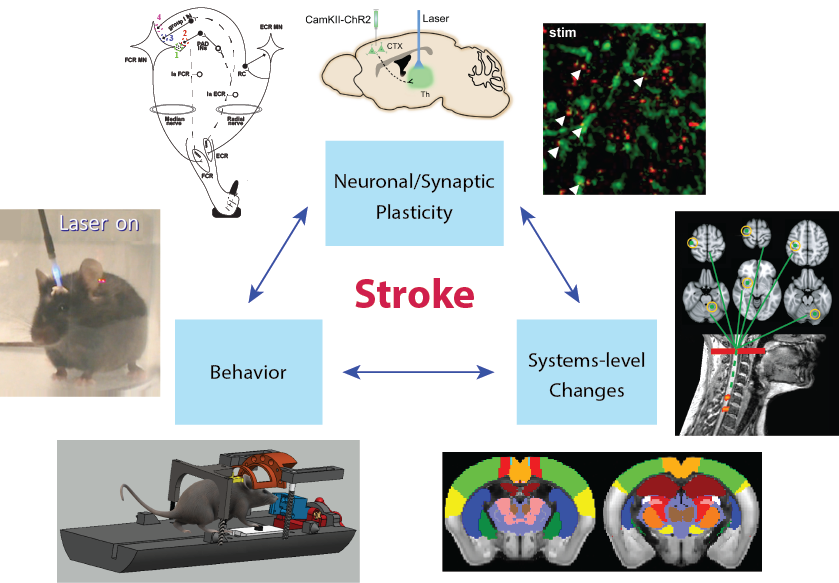|
Our LAB AIM is to push the boundaries of science in neuroplasticity forward, and help stroke patients to regain their lost motor function better, and faster! Our END GOAL is to deliver an FDA-approved neurostimulation-based treatment to improve sensory-motor function in stroke patients! Our Science: Stroke does not only disrupt local brain function, but it also results in long-term changes to spinal cord circuits; some are beneficial, some maladaptive! We are interested in understanding how the brain and spinal cord circuits interact and reorganize to support functional recovery in major motor impairments after stroke, such as, Force Control deficits and Spasticity! |
Our Approach: In rodents, we use optogenetics, calcium imaging and fMRI for cell-type specific stimulation and visualization of neural circuits. We design and build MR-compatible systems for fMRI in behaving mice to study brain and spinal cord reorganization following stroke and motor learning. In humans, we use simultaneous brain-spinal cord fMRI to characterize neural pathways between the brain and spinal cord, and how they change poststroke. We use this knowledge to guide optogenetic stimulation of genetically-defined neuronal populations to retrain the motor circuit and induce desired neuroplasticity after stroke! |
